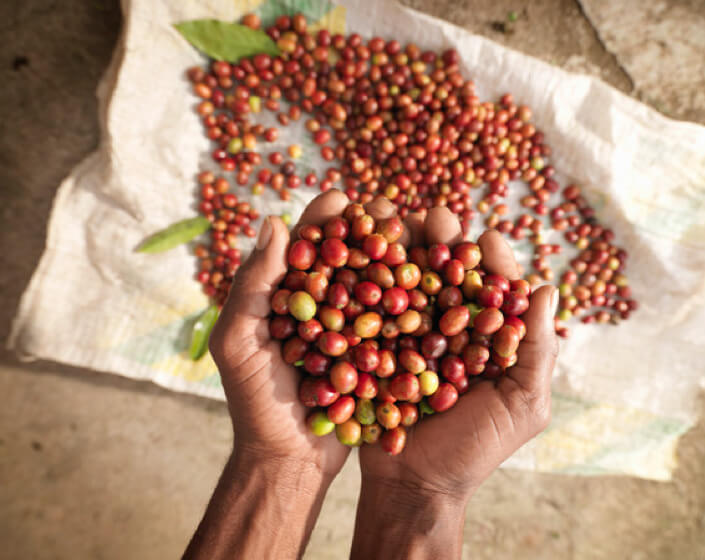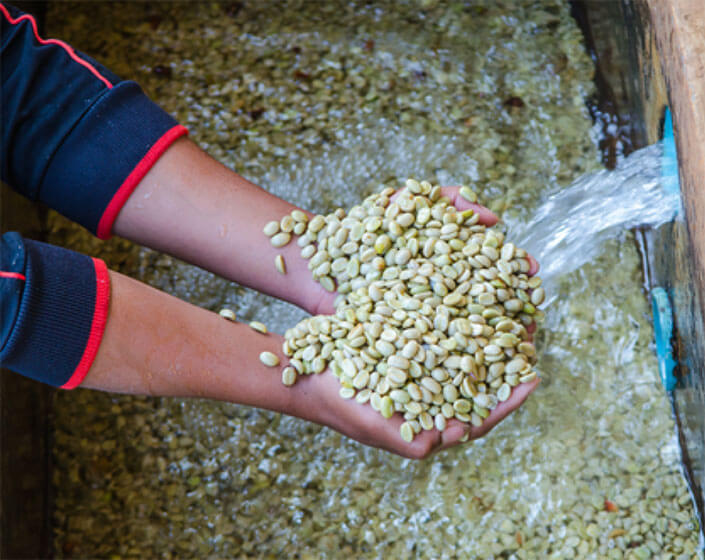How do you get a bean from a cherry?
There are two common techniques for extracting coffee beans from coffee cherries: dry (or “natural”) processing and wet processing. But how exactly do these techniques work?
Dry processing
In the natural or “sun-dried” method, coffee cherries are spread out in a thin layer either on the ground or on tables and dried by the sun. During this process, the coffee cherries are repeatedly turned with large rakes until they eventually reach a stage at which they rattle in their shells when shaken. Once the dried fruits have passed this test, they go to the huller machine, where the dried pulp and the “parchment” layer are mechanically separated from the coffee beans. Before the coffee can be sold, however, the beans are sorted according to criteria such as size, colour and density. This makes it possible to divide them into various quality categories that later serve as the basis for roasting different types of coffee. When sold on the global market, dry-processed coffees are referred to as “unwashed” or “natural.”


Wet processing
In the “fully washed” method, a great deal of water is used. After the coffee cherries have been freed of impurities and pre-sorted in flotation channels or water tanks, they enter the pulper. To remove the outermost layers of the coffee beans, the pulp and skin of the coffee cherries are squeezed off. What remains are the coffee beans and parchment, surrounded by a layer of mucilage. After some additional sorting, the depulped coffee ends up in fermentation tanks. It undergoes a controlled fermentation process which is triggered by coffee-specific enzymes. This removes any remaining mucilage. The coffee is then washed again and dried. The final layer, the parchment, is only removed from the beans just before they are sold. Up until that point, it serves as a protective layer during storage. Finally, the coffee is separated, sorted and prepared for shipment.